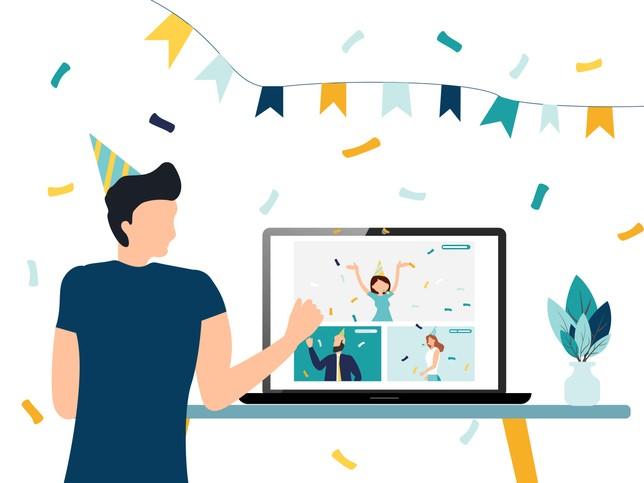The pandemic has given rise to an opportunity and a challenge: the need to explore new teaching and learning methods. A unique strategy for enquiry, application and assessment that my students and I refined to navigate these extraordinary times more effectively was teaching and learning from flipped homework. I flipped one portion of my FREN 2001 Intermediate French I course to improve student engagement and motivation.
FREN 2001 Intermediate French I is a course conducted entirely in French, with strolls planned to help students learn the language and explore the cultures of the French-speaking regions.
- An evidence-based approach to flipped learning
- How a flipped classroom model improves learning in online STEM courses
- How to induct students into the flipped-classroom model
Speakers at the Intermediate level can successfully handle various communicative tasks in straightforward social situations. However, their conversation generally remains confined to predictable and concrete exchanges necessary for survival in the target culture. The question arises: How can students progress more rapidly? The flipped classroom concept empowers students to expedite their progress to the advanced level. They can handle topics by combining and recombining known elements before each class. They can practise with native speakers prior to oral exams. They can study grammar modules at home to dedicate their time in class to oral practice.
Students often need help in world language classes owing to vocabulary, grammar and pronunciation limitations. A flipped learning approach allows students to review the new material at their own pace by engaging in online activities. This transforms previously unfamiliar content into something familiar and more easily absorbed. As a result, by the end of the semester, students in a flipped classroom are capable of self-directed learning. They produce paragraph-level language instead of sentence-level language. Their proficiency extends to employing various time frames in oral and written discourse. Moreover, they become adept at comprehending authentic texts such as articles, short stories or native speaker utterances.
The flipped classroom is an innovative educational framework that moves the lecture outside the classroom via technology and moves homework and practice with concepts inside the classroom via learning activities. Students take on a more proactive role in their learning process, developing independent learning skills through presentations, videos, PowerPoint presentations and tutorials done at home. In class, the instructor uses the time to facilitate their discussions and help them apply their knowledge through concrete tasks.
The flipped homework experiment
During the pandemic, my central objective was to tailor homework to students’ unique learning styles, prompting me to investigate the impact of flipped learning. This was when I realised it was necessary to compare the learning environment between a flipped classroom and a traditional conversation-homework classroom.
I wanted to uncover how homework influenced the learning environment, students’ diverse learning styles and students’ engagement. How does the learning environment of a flipped classroom compare with the learning environment of a conversation-homework classroom? Is learning from homework useful, efficient or just busy work?
To address these enquiries, I chose two sections of FREN 2001 Intermediate French I classes during the pandemic to conduct my investigation and help students learn. In one section, I was teaching, as usual, a traditional conversation class followed by assigned activities as homework. In the second section, I opted to flip just the homework and use it predominantly for in-class activities and assessments. My students had to adjust personal learning strategies they had relied on for years to fit this new classroom structure. The outcome was highly encouraging, demonstrating that this adaptation was swift and effective.
In the traditional conversation-homework classroom, students often arrived unprepared for class activities, grappling with producing new vocabulary and grammatical structures. They spent much time completing their homework but they never had the chance to use that material in class because we had more material to cover the next day, which was new and overwhelming. Consequently, students spent significant time on their homework, yet this effort rarely translated into substantial classroom engagement.
After reading about the flipped classroom and attending training sessions and workshops at Georgia Southern University, my teaching methods and strategies changed. I use a highly learner-focused delivery model, fostering personalised engagement with each student. I give clear guidelines for class interaction and, most importantly, I empower learners to take responsibility for their own learning. The focus is on students’ autonomy and accountability for their own learning.
This is how I flipped the homework portion of our course. From the beginning of the semester, I now assign all the activities on the book’s Supersite, with due dates on a course calendar. The dates for the homework are due before the material is covered in class. I encourage students to cultivate a daily practice routine, ingraining the habits necessary for effective learning. I underscore the relevance of these activities to perform in class, whether through quizzes, speaking with their peers or answering open-ended questions. The short quizzes in class are precisely like the activities they practise at home on the Supersite, maintaining consistency.
Make your students feel positive about homework
From a pool of about 20 exercises, I randomly select one for in-class assessment. Class sessions include a five- to 10-minute homework assignment every time. Considering my flipped classroom, two areas are affected: homework and in-class dynamics. Both shape how my students interact with the material, the professor and classroom peers. Interestingly, it appears as though students do not prefer a structured or traditional homework environment; they are pleased by how homework is ultimately handled in the flipped classroom, as evidenced by the Student Ratings of Instruction. Suddenly, students have more time to learn. This freedom positively impacted the students’ attitude towards homework learning activities, affecting how comfortable they were with class participation.
A discernible dichotomy emerges in the dynamics of homework in these two class formats. In the traditional classroom, students frequently complain about completing assigned homework. In the flipped classroom, homework intertwines with active learning, occurring when students are most engaged in the learning process. They match, write, translate, apply, compare, arrange, combine, compose, create, organise, research, choose, record, listen, watch a video and comment on all these good verbs from Bloom’s Taxonomy for Learning Objectives. Students practise repeatedly because the computer allows for unlimited submissions. It is practice; it is learning, not just graded homework for completion. Students see that the homework is accessible in the flipped classroom because the pressure and the stress switch from completing it for a grade to learning from it and using it in class to shine.
In the flipped classroom, students are not penalised for incomplete homework. Some students practise more while others practise less at home, depending on their learning style. From the instructor’s point of view, flipped homework is more manageable and more accurate in measuring student progress and learning. For the flipped classroom, the top priority is not completing homework but a relaxed atmosphere where more learning is happening at the pace that the student needs.
Olga Amarie is professor of French at Georgia Southern University.
This is an adapted extract from Online Education During Covid-19 and Beyond, edited by Silvia Puiu and Samuel O. Idowu, published with permission from Springer.
If you would like advice and insight from academics and university staff delivered direct to your inbox each week, sign up for the Campus newsletter.




comment